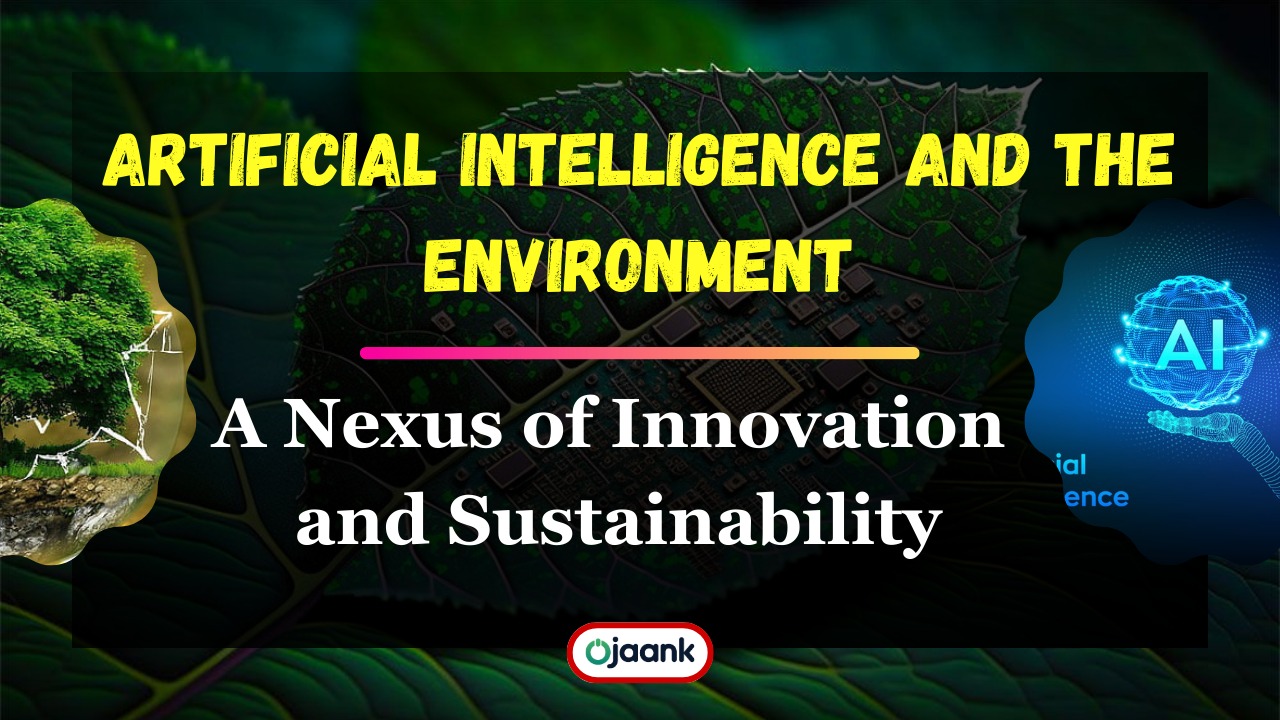Artificial Intelligence and the Environment: A Nexus of Innovation and Sustainability

In the modern era, the rapid advancement of technology has led to the emergence of Artificial Intelligence (AI) as a revolutionary force that has the potential to reshape various aspects of our lives. One of the most significant areas where AI can play a transformative role is in addressing environmental challenges. The environment, which sustains all life on Earth, is facing unprecedented threats due to factors such as climate change, resource depletion, and biodiversity loss. However, AI offers a glimmer of hope, presenting innovative solutions to tackle these pressing issues. This essay explores the multifaceted relationship between Artificial Intelligence and the environment, analyzing how AI can contribute to environmental protection, resource management, climate change mitigation, and sustainable development.
One of the primary ways AI impacts the environment is through its role in environmental monitoring and conservation efforts. Traditional methods of data collection and analysis in ecology and conservation can be laborious, time-consuming, and expensive. AI technologies, including machine learning and computer vision, can revolutionize these processes. Drones equipped with AI-enabled cameras can monitor wildlife habitats, detect illegal deforestation, and track endangered species, providing real-time insights to conservationists and policymakers. Machine learning algorithms can analyze vast amounts of data collected from remote sensors, satellite imagery, and camera traps to identify patterns, assess ecological health, and predict environmental changes.
The prudent management of resources is crucial for sustainable development, and AI can play a pivotal role in optimizing resource utilization. One area where AI excels is in predicting and managing water resources. Machine learning models can analyze historical data to forecast water availability, droughts, and floods, enabling better resource allocation and management. Smart grids, driven by AI algorithms, can optimize energy distribution, reducing wastage and enhancing energy efficiency. AI-powered algorithms can also optimize transportation routes, leading to reduced fuel consumption and emissions, and improve waste management systems through predictive analytics, promoting circular economy practices.
Climate change stands as one of the most imminent global threats, with far-reaching consequences for ecosystems, economies, and societies. AI can contribute significantly to climate change mitigation efforts. One notable application is in renewable energy. AI can forecast energy demand, optimize the operation of solar and wind farms, and enhance the efficiency of energy storage systems, thus facilitating the transition to clean energy sources. Climate modeling, a complex task requiring vast computational power, can be accelerated through AI, enabling more accurate predictions and simulations of climate scenarios. Furthermore, AI-enabled precision agriculture can optimize crop yields, reducing deforestation and minimizing the carbon footprint of food production.
Natural disasters such as hurricanes, earthquakes, and wildfires can wreak havoc on communities and ecosystems. AI can enhance disaster prediction, early warning systems, and emergency response efforts. By analyzing historical data and real-time sensor information, AI models can predict the likelihood and severity of natural disasters, enabling authorities to evacuate people and allocate resources efficiently. During disaster response, AI-powered drones can survey affected areas, assess damage, and locate survivors, expediting relief efforts. Moreover, AI can analyze social media data to provide real-time information about disaster impacts, aiding organizations in targeting relief efforts more effectively.
While the potential of AI in environmental applications is substantial, there are certain challenges and considerations that need to be addressed. One key concern is the environmental impact of AI itself. Training deep learning models requires significant computational power, which can lead to increased energy consumption and carbon emissions. Balancing the benefits of AI with its carbon footprint is a crucial consideration in harnessing AI for environmental solutions. Additionally, the ethical implications of using AI in wildlife monitoring, surveillance, and decision-making require careful consideration to ensure privacy, data security, and protection of human rights.
To fully realize the potential of AI in environmental protection, a collaborative and interdisciplinary approach is necessary. Scientists, environmentalists, policymakers, technologists, and ethicists must work together to develop AI solutions that are aligned with environmental goals. Data sharing and collaboration across borders can enhance the accuracy of AI models and expand their applicability. Moreover, public awareness and education about the capabilities and limitations of AI in environmental contexts are essential for fostering public support and informed decision-making.
Artificial Intelligence stands as a powerful tool that holds great promise in addressing environmental challenges. Its applications range from monitoring and conserving biodiversity to optimizing resource management and mitigating climate change impacts. As we stand at a crossroads of environmental degradation and technological advancement, the responsible deployment of AI can usher in a new era of innovation and sustainability. However, a cautious and collaborative approach is necessary to ensure that the benefits of AI are maximized while minimizing its potential negative impacts. By harnessing the potential of AI in harmony with environmental ethics, we can pave the way for a more sustainable and resilient future.